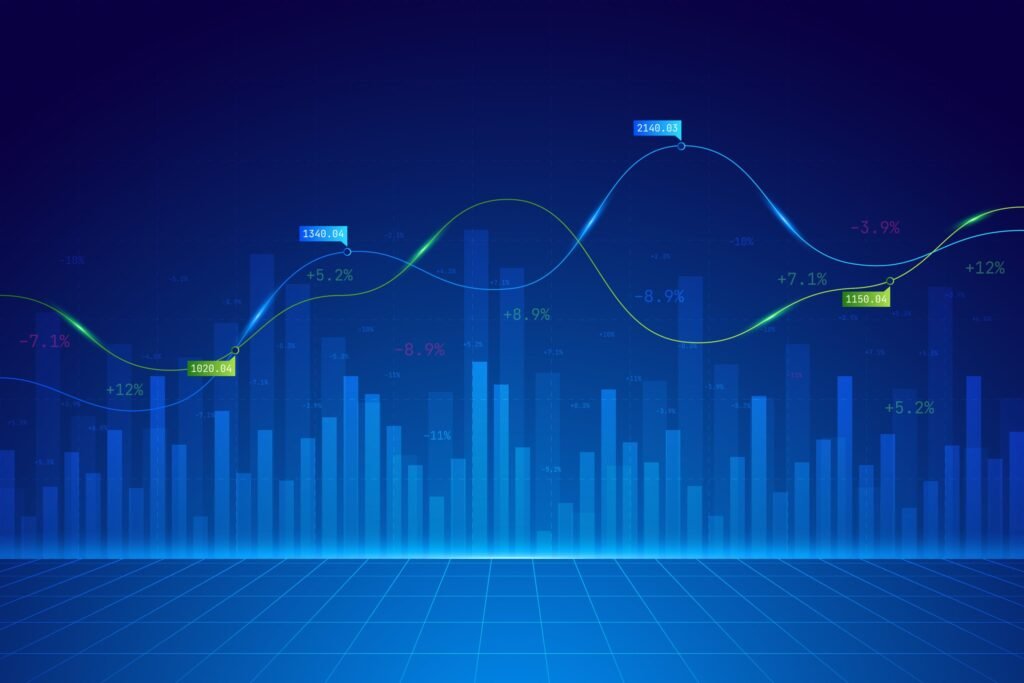Introduction: Crypto in 2025 – A Pivotal Year

2025 has proven to be a transformative year for the cryptocurrency and blockchain industry. From sweeping regulatory updates to game-changing technological innovations and evolving global adoption patterns, the momentum behind digital assets has never been stronger. Governments, institutions, and retail investors are all playing pivotal roles in this evolving digital economy.
This comprehensive article breaks down the most important crypto developments of 2025, offering a clear, informed view of the current landscape. Whether you’re an investor, developer, journalist, or enthusiast, staying updated is vital—and The Crypto Data News is here to keep you ahead.
Institutional Adoption Reaches New Heights
Wall Street Fully Embraces Bitcoin ETFs
The approval of several Bitcoin Exchange-Traded Funds (ETFs) by the U.S. Securities and Exchange Commission (SEC) in late 2024 has had profound ripple effects in 2025. These ETFs—offered by major institutions like BlackRock, Fidelity, and VanEck—have attracted billions in investment from pension funds and traditional asset managers.
Bitcoin has surpassed $85,000 in Q1 2025, largely due to institutional volume, which now accounts for over 60% of Bitcoin transactions. Ethereum ETFs are expected later in the year, further legitimizing crypto as a mainstream investment vehicle.
Regulatory Clarity Gains Ground Worldwide
U.S. and EU Set the Standard for Crypto Regulation
Regulatory uncertainty has long hindered the crypto industry, but 2025 marks a significant shift. The Crypto Regulation Framework Act in the U.S. now classifies tokens as commodities, securities, or digital utilities—each with defined tax, compliance, and KYC standards.
In Europe, the Markets in Crypto-Assets (MiCA) regulation has gone into full effect. It enhances investor protections and requires stablecoin issuers to meet strict reserve requirements. These developments are encouraging safer investments and reducing fraud, while exchanges face more rigorous audit and transparency requirements.
AI and Blockchain Integration Accelerates
Smart Contracts Get Smarter
This year has seen a rapid fusion between Artificial Intelligence (AI) and blockchain technology. AI-enhanced smart contracts can now automatically adjust interest rates on lending platforms based on market volatility, detect potential fraud before execution, and even power automated governance in decentralized autonomous organizations (DAOs).
Projects like ChainGPT and Fetch.ai are pioneering this movement, enabling the use of predictive data models within blockchain networks to optimize supply chains, healthcare, and financial services.
CBDCs Make a Global Impact
Digital Currencies by Central Banks Are Now Mainstream
More than 80 countries have either launched or are piloting Central Bank Digital Currencies (CBDCs) in 2025. The Digital Euro and Digital Yen are already accepted across both public and private sectors. The U.S. is currently testing its digital dollar, dubbed “FedCoin,” in multiple states.
In developing countries, CBDCs are providing an alternative to unstable fiat currencies. These digital currencies are increasing financial inclusion and modernizing how citizens interact with their governments and economies.
Layer 2 Solutions Surge in Popularity
Ethereum continues to face scalability issues, and Layer 2 (L2) solutions have become the answer. Projects like Arbitrum, Optimism, and zkSync have gained mass adoption due to their ability to drastically reduce transaction costs and processing times.
L2 networks now handle millions of transactions per day, enabling DeFi, gaming, and NFT platforms to operate smoothly. Even Bitcoin is entering the Layer 2 conversation through developments like Stacks, which enables smart contracts and NFTs on the Bitcoin blockchain.
DeFi Reimagined for Mainstream Users
After a period of stagnation, Decentralized Finance (DeFi) has made a strong comeback. User interfaces are now more intuitive, and platforms have become mobile-native and regulation-ready. Liquid staking derivatives are among the top-performing products, offering users yield from staked assets without losing liquidity.
Real World Assets (RWAs), including tokenized real estate and government bonds, are being integrated into DeFi ecosystems. This development is helping traditional investors bridge the gap between traditional finance and decentralized protocols.
Additionally, DeFi insurance protocols are gaining attention, providing users with protection against smart contract bugs, hacks, and protocol failures.
NFTs Enter Utility Phase
The NFT market in 2025 is defined not by speculation, but by practical use cases. Non-fungible tokens are now widely used for digital identity, intellectual property verification, and even as tickets for events or proof of ownership for real estate and vehicles.
Governments and corporations are exploring NFTs to manage supply chains and product authentication. The integration of NFTs with metaverse platforms is also growing, giving rise to fully immersive digital ownership experiences.
Crypto in Emerging Markets
Cryptocurrency adoption in emerging markets has surged. In countries facing high inflation or limited banking infrastructure, digital assets are providing much-needed financial stability. Nigeria, Vietnam, Argentina, and the Philippines are leading this trend.
In the Philippines, over 70% of remittances are now processed via blockchain. Argentina is increasingly turning to stablecoins like USDT and Bitcoin as inflation hedges. Nigeria has even launched a blockchain-based securities exchange to provide greater financial access to its citizens.
These shifts are proving that crypto isn’t just a speculative tool—it’s a lifeline in uncertain economies.
Web3 Social Media on the Rise
The rise of decentralized social media is one of the most exciting developments of 2025. Platforms like Lens Protocol, Farcaster, and CyberConnect are reshaping how people interact online. These platforms emphasize data ownership, content monetization, and freedom from centralized censorship.
Creators can now monetize their content directly through blockchain tokens and NFTs, while users retain full control of their data and identities. Web3 social media is revolutionizing the creator economy and building communities based on transparency and user governance.
Environmental Concerns and Green Crypto
As awareness of climate change continues to rise, the blockchain industry is prioritizing sustainability. Ethereum’s successful shift to Proof-of-Stake (PoS) reduced its energy consumption by more than 99%. Other blockchains like Algorand and Chia are built from the ground up to be eco-friendly.
Additionally, projects are emerging that focus on carbon credit trading, on-chain environmental monitoring, and green finance. The industry is moving toward a future where innovation and environmental responsibility can go hand-in-hand.
Security and Hacks – The Dark Side of 2025
Despite progress, security remains a major concern. In 2025, over $2 billion has already been lost to hacks and exploits, primarily targeting DeFi protocols, cross-chain bridges, and wallet vulnerabilities.
Protocols are now implementing multiple layers of protection, including real-time audits, bug bounties, and multi-signature wallets. Security-first design is becoming a standard in development, and users are increasingly adopting hardware wallets to safeguard their assets.
The rise of insurance protocols that cover losses due to cyberattacks is also helping restore user confidence.
Conclusion: Navigating the Future of Crypto
The crypto landscape in 2025 is a mix of unprecedented opportunity and new challenges. Institutional investors are reshaping market dynamics. Regulatory frameworks are giving legitimacy to digital assets. Technologies like AI and Web3 are pushing the boundaries of what’s possible. And users in both developed and emerging economies are discovering new financial freedoms.
Staying informed in this fast-paced industry is more important than ever. From Bitcoin ETFs to DeFi insurance, from NFT utility to eco-friendly consensus algorithms—the innovations are endless.
The future of crypto is unfolding now, and it promises to be more integrated, inclusive, and intelligent than ever before. Whether you’re a casual investor or a blockchain developer, 2025 is your time to engage, innovate, and benefit from the digital revolution.
